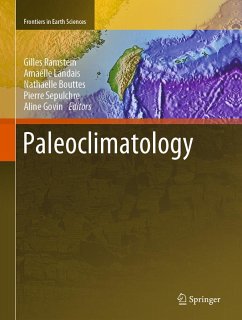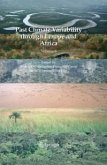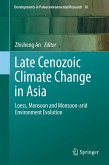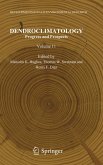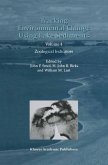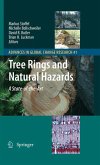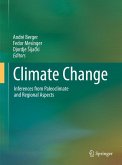Gilles Ramstein is a director of research at Laboratoire des Sciences du Climat et de l'Environnement (LSCE, France). His initial degree is in physics and since 1992 he has specialized in climate modeling. He has been responsible for many French and European research projects on the Pleistocene, Cenozoic and Precambrian eras. He has also been the advisor of many PhD students who have explored and expanded the frontiers of paleoclimate modeling. As a climate modeler, he studies very different climate contexts from "Snowball Earth" episodes (717-635 Ma) to more recent, and occasionally future, climate situations.The main research topics he focuses on are: · Geological time from the Precambrian to the Cenozoic: o Investigation of relationships between tectonics, the carbon cycle and the climate with an emphasis on the impact on the climate and the atmospheric CO2 cycle of major tectonic events such as plate movements, shrinkage of epicontinental seas, mountain range uplift and the opening/closing of seaways. o Leading international collaborations on projects on monsoon evolutions and the dispersal of human ancestors during the Neogene periods. · From the Pleistocene to future climate: in this framework, his major interests are interactions between orbital forcing factors, CO2 and climate. More specifically, his focus is on the response of the cryosphere, an important component of the climate system during these periods, with an emphasis on the development of the Greenland ice sheet at the Pliocene/Pleistocene boundary and abrupt climate changes driven by ice sheet variations. He has also published several books and coedited the French version of "Paleoclimatologie" (CNRS Edition) and contributed to an online masters program devoted to educating journalists on climate change (Understanding the interactions between climate, environment and society ACCES). Amaëlle Landais is a research director at Laboratoire des Sciences du Climat et de l'Environnement (LSCE, France). Her initial degree is in physics and chemistry and, since her PhD in 2001, she has specialised in the study of ice cores. She has been responsible for several French and European research projects on ice cores working on data acquisition both in the lab and in the field, interacting extensively with modelers. She has been the supervisor of 10 PhD students and is deeply committed to supporting and training students in laboratory work. Her main research interests are the reconstruction of climate variability over the Quaternary and the links between climate and biogeochemical cycles. To improve our understanding of these areas , she develops geochemical tracers in ice cores (mainly isotopes), performs process studies using laboratory and field experiments s and analyses shallow and deep ice cores from polar regions (Greenland and Antarctica). T hrough numerous collaborations and improvement of ice core dating methods, she tries to establish connections with other paleoclimatic archives of the Quaternary. Nathaelle Bouttes is a research scientist at the Laboratoire des sciences du climat et de l'environnement (LSCE/IPSL). Following the completion of her PhD in 2010 on the glacial carbon cycle, she went to the University of Reading (UK) for a 5-year postdoc on recent and future sea level changes. She then spent a year at Bordeaux (France) with a Marie -Curie Fellowship on interglacials carbon cycle before joining the LSCE in 2016. Since then, she has specialized in understanding glacial-interglacial carbon cycle changes using numerical models and model-data comparison. She is mostly using and developing coupled carbon-climate models to understand past changes of the carbon cycle, in particular the evolution of the atmospheric CO2. She has been focusing on the period covered by ice core records, i.e. the last 800 000 years. She uses model-data comparison by directly simulating proxy data such as ¿13C to evaluate possible mechanisms for the orbital and millennial changes. She has been involved in several projects covering this topic as well as teaching and supervising PhD students. Pierre Sepulchre is a CNRS research scientist at the Laboratoire des sciences du climat et de l'environnement (LSCE/IPSL). He completed a PhD on the Miocene climate of Africa in 2007,then went to UC Santa Cruz (USA) for a 2-year postdoctoral position working on the links between the uplift of the Andes and atmospheric and oceanic dynamics. His life-long research project at CNRS is to evaluate the links between tectonics, climate and evolution at the geological timescales, focusing on the last 100 million-years. Through the supervision of PhD students and his collaboration with geologists and evolutionary biologists, he also worked at evaluating paleoaltimetry methods with the use of an isotope-enabled atmospheric general circulation model, as well as linking continental surface deformation, climate and biodiversity in Africa and Indonesia. In the recent years, he led the implementation and validation of a fast version of the IPSL earth system model, that allows running long climate integrations dedicated to paleoclimate studies. Aline Govin is since 2015 a research associate at the Laboratoire des Sciences du Climat et de l'Environnement (LSCE,Gif sur Yvette, France). She studied Earth Sciences at the Ecole Normale Supérieure of Paris (France), and obtained in 2008 a PhD thesis in paleoclimatology jointly issued by the University of Versailles Saint Quentin en Yvelines (France) and the University of Bergen (Norway). Before joining the LSCE, she worked for five years as a postdoctoral fellow at the Center for Marine Environmental Sciences (MARUM, University of Bremen) in Germany. Her research activities focus on the reconstruction of paleoclimatic and paleoceanographic changes by applying various types of geochemical and sedimentological tracers on marine sediment cores. She has mostly worked on the Earth's climatic changes of the last 150,000 years, and is an expert of the Last Interglacial climate, which is an excellent case study to investigate the response of the Earth's climate to past warming conditions that could be encountered in the coming decades. Her research interests include the past variability of the deepNorth Atlantic circulation, the responses and drivers of tropical monsoon systems (e.g. South American Monsoon), the development and calibration of paleo-tracers, the development of robust chronologies across archives and the quantification of related uncertainties, as well as the comparison of paleo-reconstructions to climate model simulations of past climates. She has authored around 30 scientific publications, and has been involved in many French, German and other international (e.g. Brazilian) projects.
1. The climate system: its functioning and history.- 2. The changing face of the Earth throughout the ages.- 3. Introduction to geochronology.- 4. Carbon-14.

